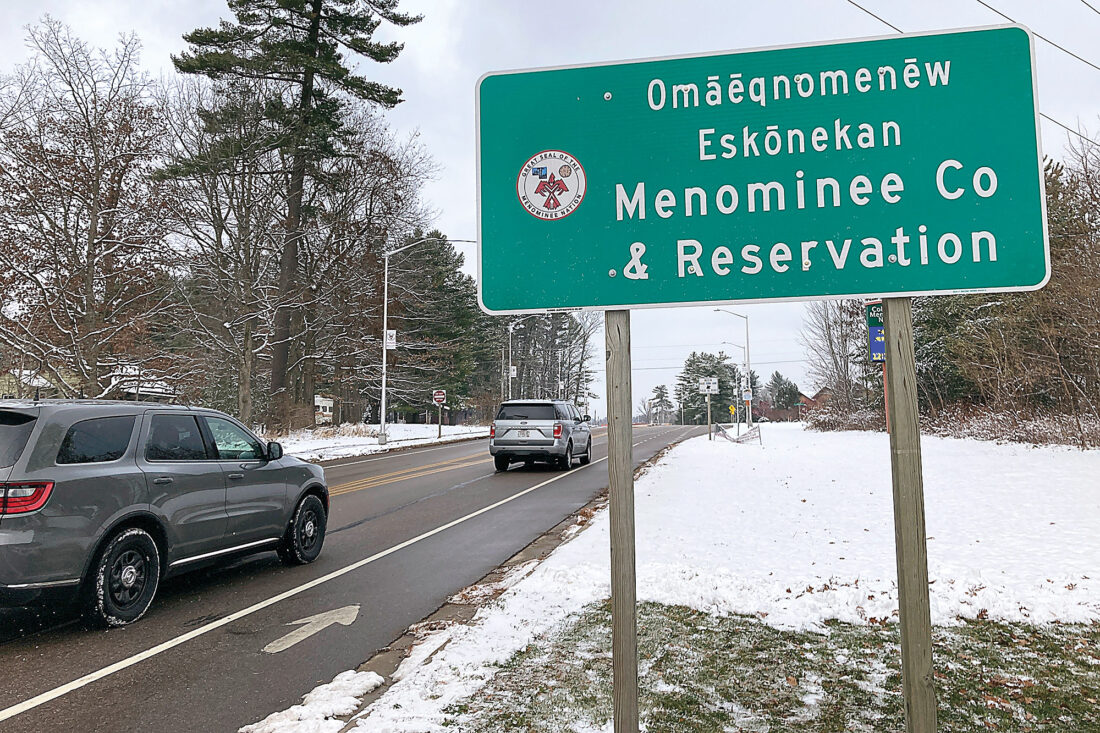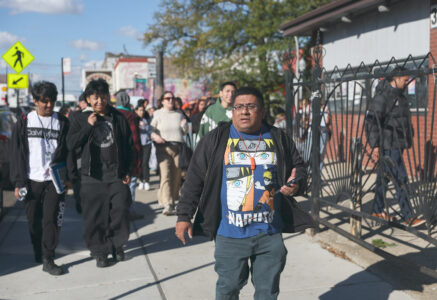Signs promote language awareness
Native American translations being added to road signage

Cars pass a dual-language sign for the Menominee Indian Tribe of Wisconsin, which was erected along Highway 47/55 in Keshena, Wisconsin, on Nov. 17, 2022. Wisconsin Department of Transportation via AP
A few years back, Sage Brook Carbone was attending a powwow at the Mashantucket Western Pequot reservation in Connecticut when she noticed signs in the Pequot language.
Carbone, a citizen of the Northern Narragansett Indian Tribe of Rhode Island, thought back to Cambridge, Massachusetts, where she has lived for much of her life. She never saw any street signs honoring Native Americans, nor any featuring Indigenous languages.
She submitted to city officials the idea of adding Native American translations to city street signs. Residents approved her plan and will install about 70 signs featuring the language of the Massachusett Tribe, which English settlers encountered upon their arrival.
“What a great, universal way of teaching language,” she said of the project done in consultation with a member of the Massachusett Tribe and other Native Americans.
“We see multiple languages written almost everywhere, but not on municipal signage,” she said. “Living on a numbered street, I thought this is a great opportunity to include Native language with these basic terms that we’re all familiar with around the city.”
Carbone has joined a growing push around the country to use Indigenous translations on signs to raise awareness about Native American communities. It also is a way to revive some Native American languages, highlight a tribe’s sovereignty, as well as open the door for wider debates on land rights, discrimination and Indigenous representation in the political process.
“We have a moment where there is a search for some reconciliation and justice around Indigenous issues,” said Darren Ranco, chair of Native American Programs at the University of Maine and a citizen of the Penobscot Nation. “The signs represent that, but by no means is that the end point around these issues. My concern is that people will think that putting up signs solves the problem, when in fact, it’s the beginning point to addressing deeper histories.”
At least six states have followed suit, including Iowa, New York, Minnesota and Wisconsin.
Signs along U.S. Highway 30 in Iowa include the Meskwaki Nation’s own spelling of the tribe, Meskwakiinaki, near its settlement. In upstate New York, bilingual highway signs in the languages of the Seneca, Onondaga and Tuscarora tribes border highways and their reservations.
In Wisconsin, six of the 11 federally recognized tribes in the state have installed dual language signs.
“Our partnerships with Wisconsin’s Native Nations are deeper than putting up highway signs,” WisDOT Secretary Craig Thompson said in a statement. “We are proud of the longstanding commitment to foster meaningful partnerships focused on our future by providing great care and consideration to our past.”
Minnesota has put up signs in English and the Dakota or Ojibwe languages on roads and highways that traverse tribal lands, while the southeast Alaska community of Haines this summer erected stop, yield, ‘Children at Play’ and street name signs in both English and Tlingit.
Douglas Olerud, the mayor at the time, told the Juneau Empire it was healing for him after hearing for years from Tlingit elders that they were not allowed to use their language when sent to boarding schools.
“This is a great way to honor some of those people that have been working really hard to keep their traditions and keep the language alive, and hopefully they can have some small amount of healing from when they were robbed of the culture,” he said.



